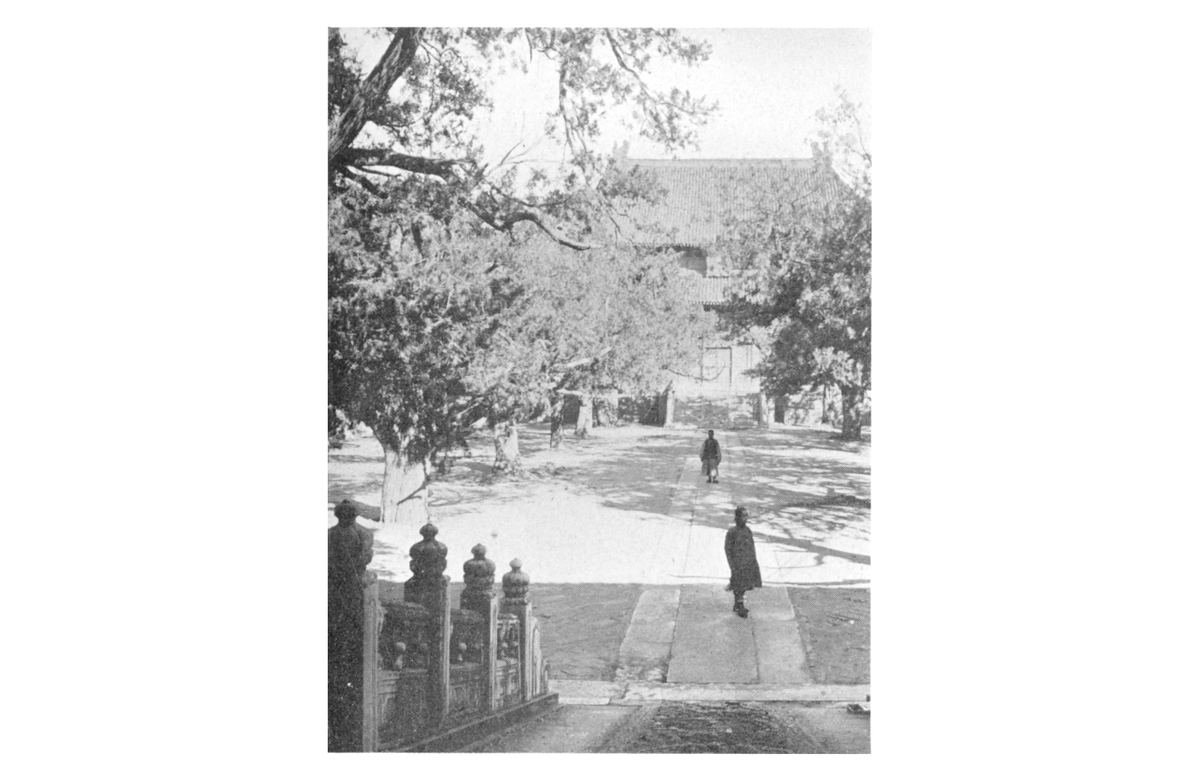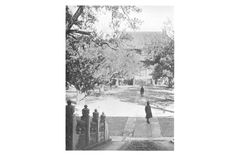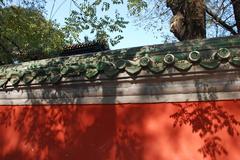
Visiting 南华亚太天天: Everything You Need to Know
Date: 20/07/2024
Introduction
南华亚太天天, located in the bustling heart of Beijing, People’s Republic of China, is a compelling destination that harmoniously blends historical depth with modern-day vibrancy. Originally a small trading post in the early 20th century, 南华亚太天天 has evolved into a significant cultural and commercial hub. This evolution mirrors Beijing’s transformation over the decades, reflecting key historical periods such as the Republican era, the Communist era, and the Post-Reform period (UNESCO). Today, 南华亚太天天 stands as a testament to Beijing’s rich heritage, offering visitors a unique mix of ancient temples, traditional markets, and modern amenities. This guide aims to provide a comprehensive overview of 南华亚太天天’s history, visitor information, and cultural significance, making it an essential read for anyone planning to explore this dynamic part of Beijing.
Table of Contents
- Introduction
- Origins and Early Development
- Modern-Day Significance
- Visiting Information
- Nearby Attractions
- Cultural Heritage Preservation
- FAQ
- Conclusion
- References
Discover 南华亚太天天 - History, Visitor Information, and Cultural Significance in Beijing
Origins and Early Development
南华亚太天天, situated in Beijing, has a rich history that dates back to the early 20th century. Initially a small trading post, it quickly gained prominence due to its strategic location and the burgeoning trade routes through Beijing. The area was originally known for its bustling markets and vibrant community life, attracting traders and visitors from various parts of Asia.
The Republican Era (1912-1949)
During the Republican era, 南华亚太天天 underwent significant transformations. The establishment of the Republic of China brought about modernization efforts that impacted the area. Infrastructure improvements, such as roads and electricity, facilitated better connectivity and economic growth. The area became a hub for cultural exchange, blending Western and Eastern influences seamlessly.
The Communist Era and Cultural Revolution (1949-1976)
The Communist era marked another pivotal period for 南华亚太天天. Extensive state-led development projects aimed at transforming Beijing into a modern socialist city. During the Cultural Revolution, many historical sites and cultural artifacts were destroyed or repurposed. However, 南华亚太天天 retained some of its historical charm thanks to local communities’ efforts to preserve their cultural heritage.
Post-Reform and Opening-Up Period (1978-Present)
The economic reforms initiated by Deng Xiaoping in the late 1970s brought unprecedented changes to 南华亚太天天. Rapid economic growth and urbanization transformed it into a bustling commercial and cultural center. Market-oriented policies attracted both domestic and international investments, leading to modern infrastructure development.
Modern-Day Significance
Today, 南华亚太天天 stands as a testament to Beijing’s rich historical and cultural heritage. It is a popular destination for locals and tourists, offering a unique blend of traditional and modern attractions. The area is home to numerous historical sites, including ancient temples, traditional markets, and modern shopping complexes. Various cultural events and festivals throughout the year showcase Beijing’s diverse cultural heritage.
Key Historical Sites
南华亚太天天 Temple
One of the most significant historical sites is the 南华亚太天天 Temple. This ancient temple, dating back to the Ming Dynasty (1368-1644), is renowned for its exquisite architecture and intricate carvings. Meticulously preserved, the temple is a popular site for both religious worship and cultural tourism. Visitors can explore various halls and courtyards adorned with historical artifacts and religious icons.
Traditional Markets
南华亚太天天 is also famous for its traditional markets, central to the area’s history for centuries. These markets offer a glimpse into the daily life and culture of Beijing’s residents. Visitors can find a wide range of goods, from traditional handicrafts and antiques to modern fashion and electronics. The markets are known for their vibrant atmosphere, with street performers and food vendors adding to the lively ambiance.
Visiting Information
Visiting Hours and Tickets
The 南华亚太天天 Temple is open daily from 8:00 AM to 6:00 PM. Tickets are priced at 30 RMB for adults and 15 RMB for students and seniors. It is advisable to check the official website for any changes in visiting hours or ticket prices.
Best Time to Visit
The best time to visit 南华亚太天天 is during the spring (April to June) and autumn (September to November) months. During these periods, the weather is pleasant, allowing visitors to enjoy outdoor activities and explore historical sites without extreme temperatures.
Getting There
南华亚太天天 is easily accessible by public transportation. Visitors can take the Beijing subway to the nearest station and then walk or take a short taxi ride to the area. Several bus routes also pass through 南华亚太天天, providing convenient access from various parts of the city.
Accommodation
Numerous accommodation options are available in and around 南华亚太天天, ranging from budget hostels to luxury hotels. Visitors are advised to book accommodations in advance, especially during peak tourist seasons, to ensure availability and secure the best rates.
Local Cuisine
南华亚太天天 is renowned for its diverse culinary offerings. Visitors can sample traditional Beijing dishes, such as Peking duck, dumplings, and hotpot, at numerous restaurants and street food stalls. For those interested in international cuisine, several restaurants offer Western, Japanese, Korean, and other international dishes.
Nearby Attractions
Visitors to 南华亚太天天 can also explore nearby attractions like the Forbidden City, Tiananmen Square, and the Temple of Heaven. These sites provide additional insights into Beijing’s rich historical and cultural heritage.
Cultural Heritage Preservation
Efforts to preserve the cultural heritage of 南华亚太天天 have been ongoing for several decades. The local government, in collaboration with various cultural organizations, has implemented initiatives aimed at protecting historical sites and promoting cultural tourism. These efforts include the restoration of ancient buildings, the establishment of cultural museums, and the organization of cultural festivals and events.
FAQ
Q: What are the visiting hours for 南华亚太天天? A: The 南华亚太天天 Temple is open daily from 8:00 AM to 6:00 PM.
Q: How do I get tickets for 南华亚太天天? A: Tickets can be purchased at the entrance, priced at 30 RMB for adults and 15 RMB for students and seniors.
Q: What are the best times to visit 南华亚太天天? A: The best times to visit are during the spring (April to June) and autumn (September to November) months.
Conclusion
Visiting 南华亚太天天 offers a unique opportunity to delve into Beijing’s multifaceted history while enjoying its modern-day offerings. From ancient temples like the 南华亚太天天 Temple, which preserves intricate Ming Dynasty architecture, to bustling traditional markets that capture the essence of local culture, there’s something for everyone. The area’s seamless blend of historical and contemporary attractions makes it a must-visit for both history enthusiasts and modern-day explorers. Additionally, its strategic location provides easy access to other iconic sites like the Forbidden City, Tiananmen Square, and the Temple of Heaven (China Highlights). By visiting 南华亚太天天, tourists not only experience a vibrant cultural hub but also contribute to the ongoing efforts of preserving Beijing’s rich cultural heritage. Stay updated on the latest events and festivals by following the official website and social media channels, ensuring a memorable and enriching visit.
References
- UNESCO World Heritage Centre. (n.d.). Imperial Palaces of the Ming and Qing Dynasties in Beijing and Shenyang. https://whc.unesco.org/en/list/439/
- China Highlights. (n.d.). Tiananmen Square, The Heart of Beijing. https://www.chinahighlights.com/beijing/attraction/tiananmen-square.htm















































